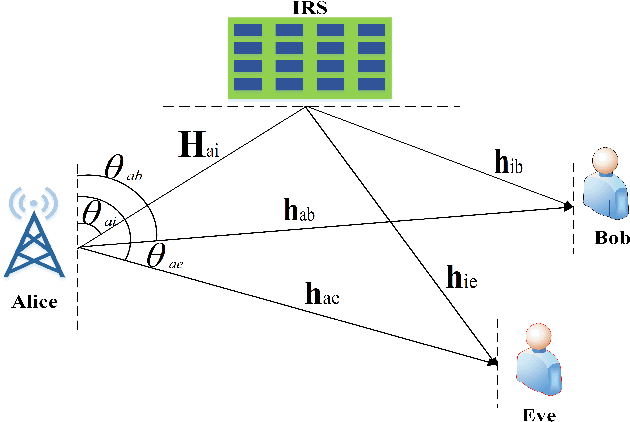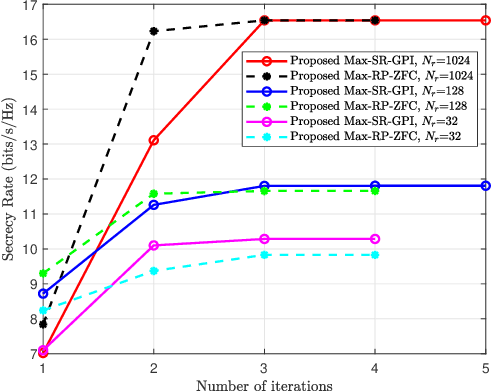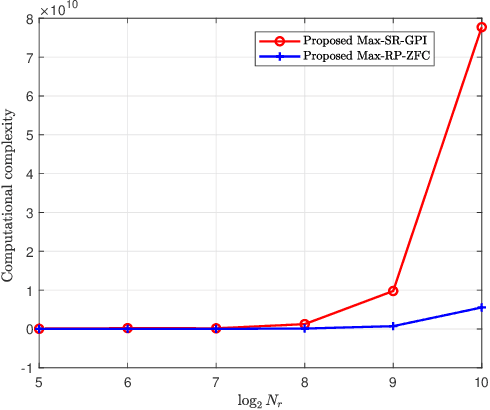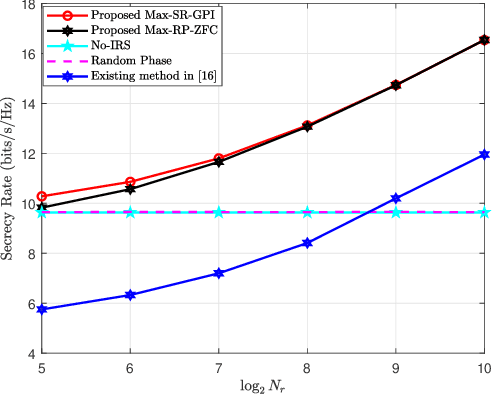Yeqing Lin
Out of Many, One: Designing and Scaffolding Proteins at the Scale of the Structural Universe with Genie 2
May 24, 2024



Abstract:Protein diffusion models have emerged as a promising approach for protein design. One such pioneering model is Genie, a method that asymmetrically represents protein structures during the forward and backward processes, using simple Gaussian noising for the former and expressive SE(3)-equivariant attention for the latter. In this work we introduce Genie 2, extending Genie to capture a larger and more diverse protein structure space through architectural innovations and massive data augmentation. Genie 2 adds motif scaffolding capabilities via a novel multi-motif framework that designs co-occurring motifs with unspecified inter-motif positions and orientations. This makes possible complex protein designs that engage multiple interaction partners and perform multiple functions. On both unconditional and conditional generation, Genie 2 achieves state-of-the-art performance, outperforming all known methods on key design metrics including designability, diversity, and novelty. Genie 2 also solves more motif scaffolding problems than other methods and does so with more unique and varied solutions. Taken together, these advances set a new standard for structure-based protein design. Genie 2 inference and training code, as well as model weights, are freely available at: https://github.com/aqlaboratory/genie2.
Beamforming and Phase Shift Design for HR-IRS-aided Directional Modulation Network with a Malicious Attacker
Feb 18, 2023Abstract:In this paper, we propose to use hybrid relay-intelligent reflecting surface (HR-IRS) to improve the security performance of directional modulation (DM) system. In particular, the eavesdropper in this system works in full-duplex (FD) mode and he will eavesdrop on the confidential message (CM) as well as send malicious jamming. We aim to maximize the secrecy rate (SR) by jointly optimizing the receive beamforming, transmit beamforming and phase shift matrix (PSM) of HR-IRS. Since the optimization problem is un-convex and the variables are coupled to each other, we solve this problem by iteratively optimizing these variables. The receive beamforming and transmit beamforming are obtained based on generalized Rayleigh-Ritz theorem and Dinkelbach's Transform respectively. And for PSM, two methods, called separate optimization of PSM (SO-PSM) and joint optimization of PSM (JO-PSM) are proposed. Thus, two iterative algorithms are proposed accordingly, namely maximizing SR based on SO-PSM (Max-SR-SOP) and maximizing SR based on JO-PSM (Max-SR-JOP). The former has better performance and the latter has lower complexity. The simulation results show that when HR-IRS has sufficient power budget, the proposed Max-SR-SOP and Max-SR-JOP can enable HR-IRS-aided DM network to obtain higher SR than passive IRS-aided DM network.
Generating Novel, Designable, and Diverse Protein Structures by Equivariantly Diffusing Oriented Residue Clouds
Feb 03, 2023Abstract:Proteins power a vast array of functional processes in living cells. The capability to create new proteins with designed structures and functions would thus enable the engineering of cellular behavior and development of protein-based therapeutics and materials. Structure-based protein design aims to find structures that are designable (can be realized by a protein sequence), novel (have dissimilar geometry from natural proteins), and diverse (span a wide range of geometries). While advances in protein structure prediction have made it possible to predict structures of novel protein sequences, the combinatorially large space of sequences and structures limits the practicality of search-based methods. Generative models provide a compelling alternative, by implicitly learning the low-dimensional structure of complex data distributions. Here, we leverage recent advances in denoising diffusion probabilistic models and equivariant neural networks to develop Genie, a generative model of protein structures that performs discrete-time diffusion using a cloud of oriented reference frames in 3D space. Through in silico evaluations, we demonstrate that Genie generates protein backbones that are more designable, novel, and diverse than existing models. This indicates that Genie is capturing key aspects of the distribution of protein structure space and facilitates protein design with high success rates. Code for generating new proteins and training new versions of Genie is available at https://github.com/aqlaboratory/genie.
Enhanced-rate Iterative Beamformers for Active IRS-assisted Wireless Communications
Dec 16, 2022Abstract:Compared to passive intelligent reflecting surface (IRS), active IRS is viewed as a more efficient promising technique to combat the double-fading impact in IRS-aided wireless network. In this paper, in order to boost the achievable rate of user in such a wireless network, three enhanced-rate iterative beamforming methods are proposed by designing the amplifying factors and the corresponding phases at active IRS. The first method, called generalized maximum ratio reflection (GMRR), is presented with a closed-form expression, which is motivated by the maximum ratio combing. To further improve rate, maximize the simplified signal-to-noise ratio (Max-SSNR) is designed by omitting the cross-term in the definition of rate. Using the Rayleigh-Ritz (RR) theorem and the fractional programming (FP), two enhanced methods, Max-SSNR-RR and Max-SSNR-FP are proposed to iteratively optimize the norm of beamforming vector and its associated normalized vector. Simulation results indicate that the proposed three methods make an obvious rate enhancement over Max-reflecting signal-to-noise ratio (RSNR) and passive IRS, and are in increasing order of rate performance as follows: GMRR, Max-SSNR-RR, and Max-SSNR-FP.
Three High-rate Beamforming Methods for Active IRS-aided Wireless Network
Dec 08, 2022Abstract:Due to its ability of breaking the double-fading effect faced by passive intelligent reflecting surface (IRS), active IRS is evolving a potential technique for future 6G wireless network. To fully exploit the amplifying gain achieved by active IRS, two high-rate methods, maximum ratio reflecting (MRR) and selective ratio reflecting (SRR) are presented, which are motivated by maximum ratio combining and selective ratio combining. Moreover, both MRR and SRR are in closed-form. To further improve the rate, a maximum reflected-signal-to-noise ratio (Max-RSNR) is first proposed with an alternately iterative infrastructure between adjusting the norm of beamforming vector and its normalized vector. This may make a substantial rate enhancement over existing equal-gain reflecting (EGR). Simulation results show the proposed three methods perform much better than existing method EGR in terms of rate. They are in decreasing order of rate performance: Max-RSNR, MRR, SRR, and EGR.
Two Low-complexity Efficient Beamformers for IRS-aided Directional Modulation Networks
Nov 17, 2022Abstract:As an excellent tool for aiding communication, intelligent reflecting surface (IRS) can extend the coverage area, remove blind area, and achieve a dramatic rate improvement. In this paper, we improve the secret rate (SR) performance at directional modulation (DM) networks using IRS. To fully explore the benefits of IRS, two efficient methods are proposed to enhance SR performance. The first approach computes the confidential message (CM) beamforming vector by maximizing the SR, and the signal-to-leakage-noise ratio (SLNR) method is used to optimize the IRS phase shift matrix, which is called Max-SR-SLNR. Here, Eve is maximally interfered by transmiting artificial noise (AN) along the direct path and null-space projection (NSP) on the remaining two channels. To reduce the computational complexity, the CM, AN beamforming and IRS phase shift design are independently designed in the following methods. The CM beamforming vector is constructed based on maximum ratio transmission (MRT) criteria along the channel from Alice-to-IRS, and phase shift matrix of IRS is directly given by phase alignment (PA) method. This method is called MRT-NSP-PA. Simulation results show that the SR performance of the Max-SR-SLNR method outperforms the MRT-NSP-PA method in the cases of small-scale and medium-scale IRSs, and the latter approaches the former as IRS tends to lager-scale.
Enhanced Secure Wireless Transmission Using IRS-aided Directional Modulation
Sep 29, 2022



Abstract:As an excellent aided communication tool, intelligent reflecting surface (IRS) can make a significant rate enhancement and coverage extension. In this paper, we present an investigation on beamforming in an IRS-aided directional modulation (DM) network. To fully explore the advantages of IRS, two beamforming methods with enhanced secrecy rate (SR) performance are proposed. The first method of maximizing secrecy rate (Max-SR) alternately optimizes confidential message (CM) beamforming vector, artificial noise (AN) beamforming vector and phase shift matrix. The first optimization vector is directly computed by the Rayleigh ratio and the last two are solved with generalized power iteration (GPI). This method is called Max-SR-GPI. To reduce the computational complexity, a new method of maximizing receive power with zero-forcing constraint (Max-RP-ZFC) of only reflecting CM and no AN is proposed. Simulation results show that the proposed two methods harvest about 30 percent rate gains over the cases of random-phase IRS and no IRS, and the proposed Max-SR-GPI performs slightly better than the Max-RP-ZFC in terms of SR, particularly in the small-large IRS.
 Add to Chrome
Add to Chrome Add to Firefox
Add to Firefox Add to Edge
Add to Edge